Osechi: A New Year’s Tradition
Top Photo by kofookoo.de on Unsplash
Previous Version: Masaaki Komori used under the Creative Commons Attribution-ShareAlike 2.0 General License, via Wikipedia
Osechi-ryōri is one of the traditional foods of the New Year’s period in Japan. Starting from the Heian period, it is easily identified by the decorative stacked boxes (jūbako) it is served in. It is also well-known for the wide selection of foods contained within. Like some sort of super-bento box, osechi is all about variety. But did you know that each individual food item actually holds great significance? For those interested in (or those eating!) this annual tradition, here’s our guide to the symbolism behind some of the foods you’ll find in Osechi.
Daidai(橙)
A Japanese bitter orange, daidai means “from generation to generation” when written with different kanji (代々). It is symbolic of a wish for children in the new year.
Datemaki(伊達巻 or だてまき)
A sweet egg roll that mixes hanpen (fish cake) or mashed shrimp. The scroll-like shape is symbolic of the acquisition of knowledge & fashionable culture.
Tazukuri【田作り)
Small dried sardines or anchovies cooked to a dry crispiness in soy sauce and sugar. Long ago, farmers used dried sardines as a fertilizer for rice fields. An alternative name, Gomame, means “50,000 grains of rice”. Thus, this symbolizes the wish for a good harvest in the next year.
Kamaboko(蒲鉾)
Boiled fish paste i fashioned into long half-circles (it’s tastier than you’d expect!) The resulting shape, resembling that of a sun at daybreak, represents the first sunrise of the new year. Most kamaboko are pinkish-red and white; the red color is believed to prevent evil spirits, while white represents purity.
Kuro-mame(黒豆)
Sweet black soy beans representing good health. Mame is the word for bean, but it can also be used to describe someone who works diligently. Thus kuro-mame represent wishes for health and diligence.
Tai (鯛)
Tai, or sea bream, is a play on words derived from medetai, meaning “to celebrate.” It is eaten at weddings or when a child is born. It’s a symbol of celebration and often the centerpiece of Osechi, being the largest piece of food.
Ebi (海老)
Ebi (shrimp) symbolizes long life, due to the appearance (the bent back and long beard-like face of the shrimp is said to resemble a wise old man.) While smaller shrimp such as these are fairly common, some Osechi also feature larger Spiny Lobsters.
Nishiki-tamago(錦卵/二色玉子)
Steamed, layered egg slices that come in a variety of shapes. Circular, or the more block-like kind seen here. Tamago means ‘egg’, while nishiki refers to the costly silk brocades woven from multi-colored silk thread.
Gobo (ごぼう)
Burdock Root takes time to cut down, so you guessed it: it’s symbolic of strength and stability in life. A popular staple throughout Japanese cooking (Gobo Tempura is a must-try) its appearance in Osechi cooking feels very fitting.
Kuri-kinton (栗きんとん)
Candied chestnuts mixed with sweet potatoes, kuri-kinton is believed to bring about good fortune, as the color of the dish resembles gold. If you’re hoping to gain wealth in the coming year, make sure to eat some of this!
Osechi is traditionally prepared prior to New Year’s Day and then generally eaten during the following 3 days (stemming from an ancient belief that it was taboo to cook anything except zōni. On New Year’s Eve, toshi-koshi soba (年越し蕎麦) is eaten prior to the end of the year. It’s the perfect thing to follow that intense house-cleaning you did during Osouji!
Are you interested in cooking Osechi yourself? Recipes are all around the internet, and if you’re fortunate to have one nearby, ingredients may be found at specialty Asian supermarkets. While the elaborate boxes are part of the charm, they aren’t required for your own homemade Osechi. What really matters is the thought and care that goes into each dish.
よいお年を!
We here at MUSUBI thank you for checking out our blog for another year, and wish you the best for New Year’s Eve and for all of 2022! See you next year!
Photo Credits:
Top Photo by kofookoo.de on Unsplash
Previous Version: Masaaki Komori used under the Creative Commons Attribution-ShareAlike 2.0 General License, via Wikipedia
All other content (text) created by the original author and © 2021 MUSUBI by Borderlink
Top Image: Illustration by Utagawa Yoshitsuya courtesy of the Ota Memorial Museum of Art
The New Year’s period is one of endings and beginnings. As one year changes to another, many parts of the world to engage in activities symbolic of this transition. In Japan, one of the most important parts of the pre-New Year’s Eve festivities is O-Souji or Osouji (大掃除), the “big cleaning”. Osouji is a time when everyone gets together and cleans up their home, office, store, etc. Doing so allows us to head into the next year feeling refreshed and uncluttered. And best of all, you can do Osouji whether you’re in Japan or not! Here’s our brief guide to this time-honored tradition.
The History of Osouji
Osouji dates back to the Edo period. It was common for Japanese homes to have a hearth or fire stove, which would make the home progressively sootier throughout the year. Just as Edo Castle would be cleaned in December, common people began to clean their own homes around this time. It was believed that this act of purification was a way to prepare for the coming of the deities that bring the new year.
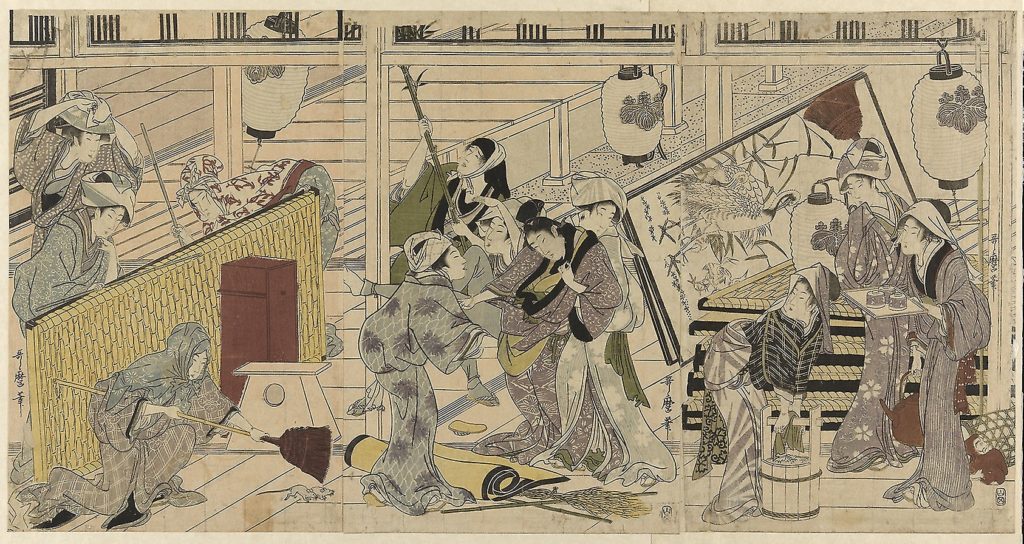
The Osouji tradition dates back hundreds of years and continues today. Art work by Kitagawa Utamaro / Alamy
The tradition continues today, with an emphasis on the familial aspect of Osouji. It is a time for the whole family to come together and clean together. The most important part of Osouji is dust cleaning (susuharai or 煤払い); the act of cleaning the home and workplace from dust and dirt. It is said that doing this activity allows one to reflect on the past year while also purify spaces for the next one.
When to do Osouji
Osouji used to start from the second week of December, but these days it is done very late in the month. In some case, it’s done on the last day of the year (Omisoka, 大晦日). In many companies, schools, or work places, it may also be done any time from before Christmas to the days immediately after.
The truth is there’s no time to start too early with Osouji, but it is recommended to finish the task by December 31st prior to midnight. After all, any dirt, dust or clutter will carry with you into the new year, which is not the greatest way to make a fresh start!
How to do Osouji
An important thing to remember about Osouji is that it’s more than just sweeping. It is a thorough cleaning of everything, including places that might not usually get attention during the year. Ventilation fans, windows, tops of shelves, behind bookcases- you name it. It is after all the “big” cleaning!
In order to do a proper job in your own home or apartment, we recommend the following tips:
Get Geared Up: Go to your local 100 Yen Shop; they’ll have virtually everything you need for cleaning your living room, kitchen, bathroom, and the rest. And best of all, you won’t break the bank acquiring these supplies. Convenience stores will also carry slightly stronger sprays for bathroom/toilet use if the cheaper stuff doesn’t cut it.
Give Yourself Time: While doing Osouji on December 31st sounds more dramatic, it’s an arduous, often slow process. Also, part of it involves clearing out clutter, and that’s easier to do when trash pick-up is still a thing (as it often shuts down temporarily during the New Year’s period). We recommend starting earlier in the final week of the year, depending on the size of the task. Set aside a day and get cleaning.
Start Early: Osouji is a great activity to do from the morning hours, as it can cause a bit of a racket from all the vacuuming, furniture-moving and other noise it may entail. We recommend rising early and getting the toughest jobs out of the way first, leaving the lighter work for later in the afternoon and evening (unless you finish by then!)
Remember to Take Breaks: If it’s your first time, you may be surprised just how exhausting Osouji can be, especially if you are doing it solo. You may reach a point where you throw your hands up in frustration at the temporary disaster created around you. Remember to take a break now and then so as to not wear yourself out.
Above All, Clean the Place: As much work as it can be, the feeling of completing Osouji is truly magical. Look at how much you’ve done! Look at all the free space, the sparkling floors, and all the rest. When it comes to cleaning there’s no wrong way to do it unless you wind up making a bigger mess than when you started.
In Conclusion
Osouji is not unlike the tradition of Spring Cleaning (though there are differences). It’s a great way to freshen up our lives and homes, and a way of heading into New Year’s Eve with a sense of accomplishment. If it’s an annual tradition in your home already we wish you luck. If it’s all new to you, we recommend making it an annual tradition of your own.
Now get up and start cleaning!
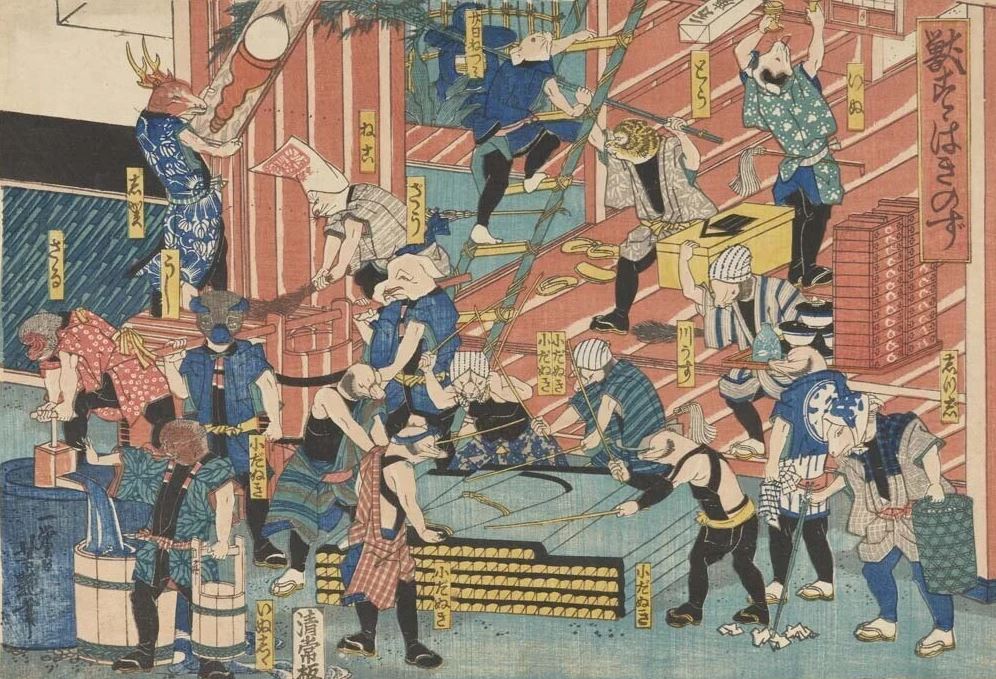
If even the ancient animal folk did it, you can too! Illustration by Utagawa Yoshitsuya courtesy of the Ota Memorial Museum of Art
Photo Credits:
Top Image: Illustration by Utagawa Yoshitsuya courtesy of the Ota Memorial Museum of Art
All other content (text) created by the original author and © 2021 MUSUBI by Borderlink
Top Image by Maksim Shutov on Unsplash
One of Japan’s most beloved winter holiday traditions is that of the Christmas Cake. Sold almost everywhere in a many varieties, it’s hard to find a household that doesn’t get at least one around this time of year. And one of the most important ingredients in the traditional Christmas Cake is strawberries (いちご, ichigo).
The Sweet Taste of Being Number One
It is said that Japan consumes the largest amount of fresh strawberries in the world, and improving farming technology has allowed the strawberry business to become one of pride and fierce competition.
As for 2019, Japan was the tenth largest producer of strawberries in the world. Just about all of its output is consumed domestically. While technically in season from January to March, strawberries are highly desired in December due their use in the cakes.
To meet the demand, Japan’s strawberry farmers have made December one of their peak business months. Many invest heavily in advanced technology and methods to produce the most delicious strawberries possible. Strawberry picking is a popular pastime in the spring. Some greenhouses are even open to the public, where you can pick your own (for a price, of course)
Welcome to the Kingdom
The largest producer of strawberries in Japan is Tochigi prefecture, known as the “Strawberry Kingdom” (いちご王国, ichigo-oukoku) and the center of it all is the city of Ashikaga. For the residents of Ashikaga, strawberries aren’t just a local crop; they are the part of the city’s identity.
After World War II, farmers in Tochigi were looking for an ideal crop to grow on their land. Cultivated areas per farmhouse were small, and business was always in flux. Despite being thought to grow better in the warmer parts of southern Japan, strawberries became the de facto crop in the 1960’s thanks for greenhouse farming technology.
Before long, a gamble to save the city’s faltering farming industry paid off in dividends, and Ashikaga & Tochigi became synonymous with strawberries. Today, many unique techniques are used to create the freshest, juiciest strawberries possible year-round. Everything from the composition of the fertilizer used to enlisting honeybees to help with pollination has made Ashikaga the go-to place for strawberry farming techniques.
A Serious Strawberry Business
What makes Japanese strawberries particularly interesting is the number of varieties available, with new ones introduced almost every year. Tochigi itself is famous for a variety called Tochi Otome (“Tochigi Maiden”), which are relatively small, sweet and fragrant. Fukuoka Prefecture, which is second in strawberry production after Tochigi, has the Ama-O (“Sweet King”), with enormous, sweet berries that are four to five times the size of other varieties.
Strawberry producers vie fiercely for the claim to the sweetest, most fragrant variety. They will give their brands imaginative names such as Beni Hoppe (“Red Cheeks”), Hatsukoi no Kaori (“The Scent of First Love”; a striking white berry) and Bijin-hime (“Beautiful Princess”).
Many of these premium strawberries are popular as gifts. Flawless, carefully packaged berries can cost several hundred yen each. Prices are more reasonable for lower-grade strawberries, so don’t worry about sampling Japan’s famed strawberries- it’s more than possible even on a budget.
It’s no secret that people love their strawberries in Japan. When you bite into a slice of Christmas Cake this weekend, you may be eating strawberries grown in the kingdom itself up in Tochigi!
Photo Credits:
Top Image by Maksim Shutov on Unsplash
All other content (text) created by the original author and © 2021 MUSUBI by Borderlink
Top Image: Erzsébet Vehofsics on Unsplash
Composing Haiku
A haiku is but a single breath crystalized and captured forever. Well, for as long as paper or the digital realm last. Once, by an old pond (furu ike ya), Japan’s most famous haikuist saw a frog jump (Kawazu tabikomu) and heard the sound of water (mizu no oto). It wasn’t a grand experience or a life shattering event for Basho Matsuo, nor one of high romance or great tragedy. This was not even a complete event – we cannot be certain, after all, that the frog caused the splashing sound.
This simplicity gets to the very core of what haiku is and how such zen, peaceful experiences bring perhaps a greater value to our lives. I first got into composing haiku in 2005 after stumbling upon an issue of the Kyoto Journal at a bookstore in Osaka. Since 2004, I’d been placed in the great urban sprawl to teach English to middle schoolers. As a country boy from a small town in the Cotswolds who’d gone to an even more rural university secluded in the Welsh mountains, the sudden chaos of the Big O was both intoxicating and overwhelming.
The Beauty of the Haiku Moment
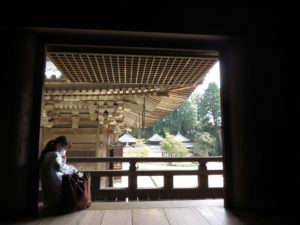 On reading this one article about Basho and haiku, I immediately tried my hand at composing them myself. At once, I felt at peace. This sense is even more intense so these days where we’re constantly connected to technology via phones, social media, and even in the classroom where students now use laptops to access teaching materials or to research projects and compositions. The latter of which led to some of my year 6 students trying to pronounce the word “photosynthesis.” Many of these tools and technologies are good, but they also disrupt our inner peace to a certain extent.
On reading this one article about Basho and haiku, I immediately tried my hand at composing them myself. At once, I felt at peace. This sense is even more intense so these days where we’re constantly connected to technology via phones, social media, and even in the classroom where students now use laptops to access teaching materials or to research projects and compositions. The latter of which led to some of my year 6 students trying to pronounce the word “photosynthesis.” Many of these tools and technologies are good, but they also disrupt our inner peace to a certain extent.
A solution many find, myself included, is to wander off into the woods for a spot of hiking or to cycle along country roads and river paths. During these times, as we calm our souls, we begin to take in more of the world around us. There we see the line up of ducks along the river, the butterfly flittering alongside us as we walk through Korakuen, and the falling leaves creating a carpet of red around Himeji Castle. These are haiku moments we can capture in verse. Think of them as photographs with words.
What are the Rules of Haiku?
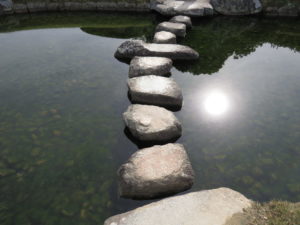 So, after all this introduction, how do haiku work? The haiku is the final, most concise, form of Japanese poetry. I say final because it developed for over a century as katauta – witty retorts of 17 syllables, then longer poems such as waka (similar to tanka), choka, and renga, before the first verse of a renga known as a hokku split off to become a haiku.
So, after all this introduction, how do haiku work? The haiku is the final, most concise, form of Japanese poetry. I say final because it developed for over a century as katauta – witty retorts of 17 syllables, then longer poems such as waka (similar to tanka), choka, and renga, before the first verse of a renga known as a hokku split off to become a haiku.
In theory, a haiku is 17 syllables (called On) split into a 5-7-5 format. Each poem will have a break in it for emphasis or to change direction. This is known as a kireji. The most important part of a haiku is the kigo. This is the seasonal word or feeling. It does not have to be explicit but needs to be there. For example, mentioning pumpkin would conjure thoughts of autumn, plum might make you think of early spring, and strawberries of late June (if you are English like me). An example:
On gliding past cars
Stuck behind cycling school girls,
Crickets start to chirp.
Or how about this one from today:
A bull-headed shrike
Preens and poses proud on my bike,
I walk instead.
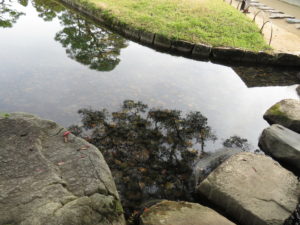 As you’ll note with that second one, there’s one less syllable. In English we’re able to express far more with 17 syllables than Japanese is able to with 17 On. This is because we have far more one-syllable words and we’re not concerned by one-syllable words with 2 On. For example, kyu sounds like 1 syllable but is 2 On – ki + small u. Osaka is actually 4 On – Oo-sa-ka while in English it’d be 3 syllables. It’s ok to have 10-17 syllables in an English haiku. The traditional translation of Basho’s pond haiku has only 10:
As you’ll note with that second one, there’s one less syllable. In English we’re able to express far more with 17 syllables than Japanese is able to with 17 On. This is because we have far more one-syllable words and we’re not concerned by one-syllable words with 2 On. For example, kyu sounds like 1 syllable but is 2 On – ki + small u. Osaka is actually 4 On – Oo-sa-ka while in English it’d be 3 syllables. It’s ok to have 10-17 syllables in an English haiku. The traditional translation of Basho’s pond haiku has only 10:
An old pond
The frog jumps
Sound of water.
We could get into the weeds about the rules, but let’s say the joy of haiku is that these basic rules get us to think about the small moments in the world around us and to find a concise way to express them. They are beautiful moments like poetic photographs using words. Maybe they’re just for you rather than for others to see, but nonetheless are full of meaning.
Conclusion: We Can All Haiku
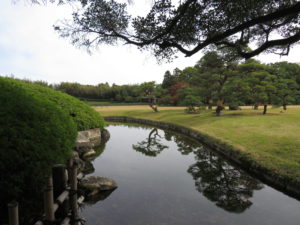 Before I wrap up, a quick mention of other forms. Haiku are strictly about seasonal, natural moments in life. They’re full of nature. If you want to write about human foibles, then these have the same 5-7-5 format with a kireji and are known as senryu. If you’d like to write longer ones try waka and tanka (5-7-5-7-7 or 7-7-5-7-5) or the choka which is 5-7-5-7-5 ad infinitum until you wish to finish, then end with a 7-7.
Before I wrap up, a quick mention of other forms. Haiku are strictly about seasonal, natural moments in life. They’re full of nature. If you want to write about human foibles, then these have the same 5-7-5 format with a kireji and are known as senryu. If you’d like to write longer ones try waka and tanka (5-7-5-7-7 or 7-7-5-7-5) or the choka which is 5-7-5-7-5 ad infinitum until you wish to finish, then end with a 7-7.
In conclusion, if you’d like to take a step back from the hectic classroom, the packed trains, and shopping madness, take a pad of paper with you (special haiku notebooks do exist) and a pen. Note down what you see around you that day. You’d be surprised by the little events and moments. Write them down in little haiku moments even if you keep them for yourself. I have found haiku to be great ways to remember these things, much nicer than taking photos or sharing online. Maybe you will too. Let me know – I’d love to see what you compose.
Photo Credits:
Top Image: Erzsébet Vehofsics on Unsplash
Additional photos provided by M.W. Wollacott
All other content (text) created by the original author and © 2021 MUSUBI by Borderlink
Top Image: Weiqi Xiong on Unsplash
Winter is right around the corner, but there’s still a few days left in fall! It’s widely thought to be one of the best times to be in Japan. Whether you live here now or are planning a future trip, here area few of our favorite fall activities. You can file them away for next year (or try to do them this weekend if you’re feeling spontaneous!)
Drink Up
If you are a coffee lover, you’re probably familiar with the pumpkin spice latte from Starbucks. It’s a favorite abroad and this year it finally became available in Japan.
It combines cinnamon and allspice, the key flavors of the pumpkin spice latte, with Starbuck’s Reserve Coffee Espresso, a unique, high-quality blend roasted onsite at the Tokyo Roastery. Oat milk and a touch of pumpkin puree is added, along with a topping of green pumpkin seed pieces.
This makes for warming beverage with a gentle aroma and spicy sweetness that’s perfect for fall. Make sure you get in on this one before it’s gone and replaced by the next limited-time season specialty!
Take A Trip
If you enjoy travel you should try to visit Nikko in the autumn. We’ve written about it before on MUSUBI and it lives up to its reputation as a must-visit destination.
For ALTs, it’s a place where our students often go to during school trips, and they may excitedly share their experiences with you. Hearing their stories, you might get curious and make your own travel plans. As well you should, because it’s a fantastic place and the fall season is a very good time to visit. There’s plenty more to see elsewhere in Tohoku as well!
Enjoy Kōyō
For those in Tokyo and looking for something closer to home, you can visit Ginkgo Avenue in Kitaaoyama in Minato city one station away from Omote-Sando station and two stations away from Shibuya. Be amazed by the beauty of the yellow trees! Here are some pictures that we took:
Be advised that it can get very crowded during weekends, so try coming during week days. There are a couple restaurants that you can have lunch or tea at while you chill and look at the trees. It is very relaxing and a pleasing experience for the eyes.
These are some of our must-tries during the fall season, but there are many more and we’d love to learn some more! As for these, try them out next year with friends or solo. Until then, get ready for winter and the end of 2021!
Photo Credits:
Top Image: Weiqi Xiong on Unsplash
All other content (text) created by the original author and © 2021 MUSUBI by Borderlink
Top Image: PhotoMIX-Company via Pixabay
All good adventures in Tokyo requires 3 essential ingredients to become memorable life-changing experiences: fun, getting lost, and friendship. And all of these can easily be found by living with other hodophiles in share houses.
“Having fun” is subjective, but one thing we can all agree on is that there are plenty of activities that most of us will find entertaining in Tokyo. The key is finding the right house mate/s to enjoy these activities with. When I first moved into a share house, I was totally clueless about living with total strangers. I was a little nervous and apprehensive about sharing a bathroom with others. Still, I was full of optimism that I`d meet many interesting people from all around the world. I wasn’t wrong!
In the Beginning
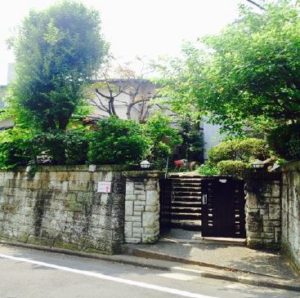 The first few days will be a “feeling-out process” between yourself and your new surroundings. By the time you move in, you’ll find others who went through the same thing, be it as students, workers, or just fellow travelers. It`s quite possible that there is already an established “order” in the house which you initially have to try and navigate by yourself. Befriending other tenants quickly is key to figuring out this order and being part of the fish bowl. This could be the difference between being able to comfortably hang out in the lounge room with others or ending up a recluse in your bedroom. Scared yet? Don’t be!
The first few days will be a “feeling-out process” between yourself and your new surroundings. By the time you move in, you’ll find others who went through the same thing, be it as students, workers, or just fellow travelers. It`s quite possible that there is already an established “order” in the house which you initially have to try and navigate by yourself. Befriending other tenants quickly is key to figuring out this order and being part of the fish bowl. This could be the difference between being able to comfortably hang out in the lounge room with others or ending up a recluse in your bedroom. Scared yet? Don’t be!
The best thing about being the newbie is that everyone wants to get to know you better. You’ll be asked the same questions repeatedly for days. These are your moments “to shine” as it were. Answer questions with positivity and enthusiasm, even though you were just asked the very same questions during breakfast. Share funny stories about where you’re from and avoid participating in conversations related to criticisms about life in Japan or any other negative talk. Undoubtedly, you will come across individuals who have feelings of resentment or disenfranchisement for whatever reason, but don’t give them the opportunity to influence your impression this country. Remember, you just arrived!
Another possibility upon moving in is that cliques had already formed based on nationality / ethnicity, common language, religion, or gender. Don’t fret if you do not readily identify with any particular group in the house. You will hopefully find people with the same common interests as you, wanting to seek the same experiences. If you`re unlucky enough not to, there are many share houses in metropolitan Tokyo so you can just relocate. I did! Always keep your accommodation plans flexible, and in the meantime try not to sign a contract longer than a month. If there is one invaluable piece of advice I`d give to anyone wanting to live in a share house, that would be it.
When selecting a share house to live in, we all tend to have the same criteria before making that final decision. Considering rent cost, location, and room type makes perfect sense when information about the city is limited to what’s online or recommendations by others. Learning along the way and making mistakes is part and parcel of adventures in a new environment. Take it all in stride, knowing that you will make better decisions as you become more familiarized with the labyrinth that is Tokyo.
Moving Out & Moving On
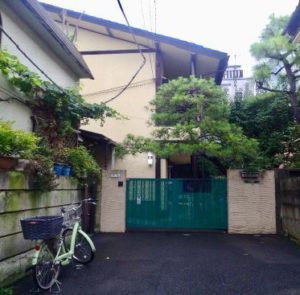 Now that you’ve been here for a few weeks and have eaten at the same restaurants several times, it’s time to find that new discount grocery store for all your weekly essentials. It’s also time to make new friends, find better places to kill time, and walk home from the last train after passing by your new favorite convenience store for matcha ice-cream.
Now that you’ve been here for a few weeks and have eaten at the same restaurants several times, it’s time to find that new discount grocery store for all your weekly essentials. It’s also time to make new friends, find better places to kill time, and walk home from the last train after passing by your new favorite convenience store for matcha ice-cream.
By now, you will have realized that this city isn’t a monolith and is actually quite diverse in culture, demography, and landscape. Choose a ward that best suits your personality, needs, and budget. Then pick a house only after you’ve visited it first, asking many questions about the current tenants. This process is essential to evade those rookie mistakes we might have committed when we first arrived bright-eyed and bushy-tailed.
With some luck, you just met some really cool cats at your new share house and can’t wait to explore your new hunting ground with them. As you accept invitations to check out this place and that place, make a sincere effort to organize outings yourself. Recommend places that you’ve never been to and don’t shy away from taking those spontaneous weekend trips to Yamanashi, Kanagawa, Chiba or Shizuoka. Having an international driver’s license is a great key to unforgettable exploits.
Getting lost in this city or anywhere else for that matter could be one of the best things to happen to us. It’s natural to feel frustrated and angry when this happens, but it shouldn’t. Learn to accept that you will get lost countless times, but keep in mind that many awesome stories starts this way. Random occasions can be seen as being more memorable than planned events.
In Conclusion
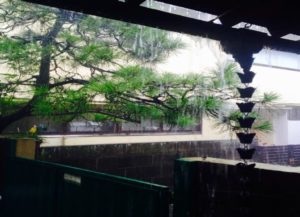 Tokyo is a city where you can do many things solo or part of a marauding wolf pack. I’ve always enjoyed my own company, but prefer the latter when seeing new places for the first time. I value shared experiences with people, using it as the foundation for meaningful friendships. I have been here for many years now and have accumulated numerous stories worth retelling over and over again with those I had created them with. In fact, I still do when the opportunity arises during long overdue catch-ups around town.
Tokyo is a city where you can do many things solo or part of a marauding wolf pack. I’ve always enjoyed my own company, but prefer the latter when seeing new places for the first time. I value shared experiences with people, using it as the foundation for meaningful friendships. I have been here for many years now and have accumulated numerous stories worth retelling over and over again with those I had created them with. In fact, I still do when the opportunity arises during long overdue catch-ups around town.
I encourage all to visit this amazing city. Whether for the short or long term, go out on a limb and spend some time living in a share house for foreigners. It’s the perfect place to practice your Japanese so that you can have the confidence to actually use it at the HUB, Hobgoblin, or 300 Bar. You will also meet foreigners with amazing life stories from as far as Suriname to East Turkestan and many other lands in between.
Growing up in multi-cultural Australia gave me the chance to learn, appreciate and respect diverse peoples, religions, and traditions. A share house is a microcosm of the home I left behind and in some ways longed for as I make an effort to assimilate and acquaint myself in my new realm.
“Some people feel the rain, others just get wet”, is a quote that best describes life in a Tokyo share house for foreigners. Staying at a hotel will just get you wet when it rains, but a share house will allow you to feel the rain.
Photo Credits:
Top Image: PhotoMIX-Company via Pixabay
Additional photos provided by Shariff Hael
All other content (text) created by the original author and © 2021 MUSUBI by Borderlink
Top Photo by Markus Winkler on Unsplash
Undoubtedly, one of the most daunting tasks facing newcomers to Japan is trying to glean useful information from the labels on food products. We all have to eat, and many of us want or need to know information about foods before we buy them, so understanding the content on these labels is essential for many people. In the case of the Japanese language, even learning to read simple kanji can be quite a test of one’s skills, so deciphering the content on a food label can seem like a nearly impossible task. This guide should help you make sense of the food labels you encounter.
Example Labels
The following photos (all of the same product) show the different types of information you may find on food packaging. They can be divided into four separate labels: the product information label (including a list of ingredients), the nutrition label, the allergy warning label, and the best by date label.
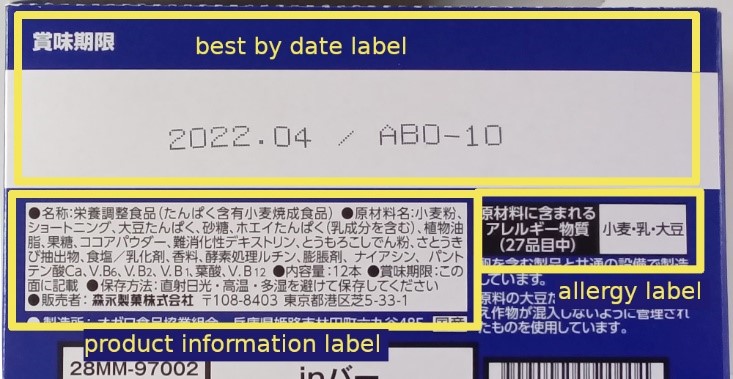
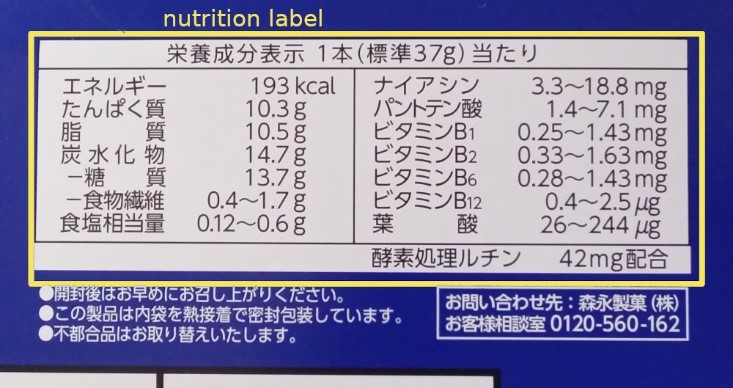
The Allergy Warning Label
If you are one of those unfortunate enough to have food allergies, of course the absolute most important thing to check when buying food is a description of the allergens it may contain. Fortunately, many food products produced in Japan have prominent allergy warnings placed on them, which are fairly easy to spot.
Here is an example allergy warning label:
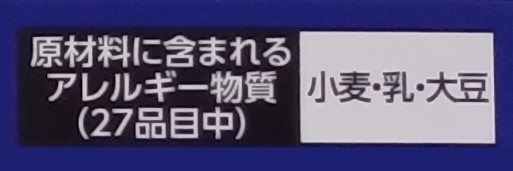
Note that the allergy warning label is usually separate from the two main labels (product information label and nutrition label) on the product. Also note the white text on black background in the photo above. While not all products use this color scheme, many do, or at least use bold text to help make this information stand out. The right side of this label indicates the allergens the product contains – in this case wheat, milk, and soybeans.
There is an established set of 27 different items that may appear on Japanese allergy warning labels, as listed below. The first seven of these are required to be listed, while the others are optional.
| food item | translation |
| えび | shrimp (prawns) |
| かに | crab |
| 小麦 (こむぎ) | wheat |
| そば | buckwheat |
| 卵(たまご) | eggs |
| 乳 | milk |
| 落花生(らっかせい) | peanuts |
| あわび | abalone |
| いか | squid (cuttlefish) |
| いくら | salmon roe |
| オレンジ | oranges |
| カシューナッツ | cashews |
| キウイフルーツ | kiwifruit |
| 牛肉 | beef |
| くるみ | walnuts |
| ご ま | sesame |
| さけ | salmon |
| さば | mackerel |
| 大豆 | soybeans |
| 鶏肉 | chicken |
| バナナ | banana |
| 豚肉 | pork |
| まつたけ | matsutake mushrooms |
| もも | peaches |
| やまいも | Japanese yams |
| りんご | apple |
| ゼラチン | gelatin |
Although some of these terms may be written differently on some food packaging than in the above list (for example, using hiragana, katakana, or kanji), the way the terms are written above is most common. Because the first seven of these are so important, additional ways of writing some of them have been provided above, in parentheses.
The Best By Date
In Japan, there are two different types of best by dates: one which indicates by what date you can expect the food to still taste good, and one which indicates the date after which the product should no longer be consumed. Most products will only have one of these two dates. Here are the useful terms you may see on this label.
| term | meaning |
| 賞味期限 | best taste by |
| 消費期限 | use by (i.e., do not use after) |
| (未開封) | unopened package (i.e., the best by date is applicable only to unopened packages) |
The best by date is usually stamped in a conspicuous place on the product. If you are unable to find it, the product information label will have an entry on it telling you where to look on the product to find the date. When there is both inner and outer packaging, the date may only be stamped on one of these.
The Product Information Label
The product information label contains various types of information about the product, including its name, the company which produces it, and a list of ingredients. Useful headings you will find on the product information label include:
| heading | meaning |
| 名称 | product name |
| 原材料名 | ingredients names (i.e., ingredients list) |
| 保存方法 | product storage recommendation |
The Nutrition Label
The nutrition label is similar to nutrition labels found today in almost any country. This label includes such standard information as caloric value, the amount of protein, fat, and carbohydrates, the salt content, and also the amounts of various types of vitamins and minerals. Useful terms you will encounter include:
| term | meaning |
| 栄養成分表示 | nutritional composition label (i.e., the name of this label) |
| エネルギー | caloric content (usually expressed in kilocalories) |
| たんぱく質 | protein |
| 脂質 | fat content |
| 炭水化物 | carbohydrates |
| ―糖質 | — sugar |
| ―植物繊維 | — fiber |
| 食塩相当量 | salt equivalent |
Near or at the top of this label is the relevant serving size. Here are some example serving sizes you may see:
| serving size | translation |
| 1食分(180g)当たり | one serving (180 grams) |
| 1缶当たり | one can |
| 1本(37g)当たり | one bar (37 grams) |
Note that the term 当たり(あたり) appears in all serving sizes, and basically means “applicable to”.
Genetically Modified Foods Notice
Some people today are concerned about the use of GMOs (Genetically Modified Organisms) in their foods. For that reason, many labels are starting to include statements about use of GMOs. If this is a concern for you, the key phrase you need to look for on the packaging is:
| term | meaning |
| 遺伝子組み換え /
遺伝子組換え |
genetically modified |
Here is one such notice found on actual food packaging:

This particular notice explains that the corn used in this product is not genetically modified.
One Final Trick
Hopefully, most people coming to live in Japan already know about the following trick, as it is incredibly beneficial, not to mention amazing. On your smartphone, you can use an app such as Google Translate to perform a live translation of a food label. In the case of Google Translate, first launch the app and be sure to specify Japanese to English translation. Then select ‘camera’, and make sure that ‘Instant’ is selected. Hover the camera over the text you want to have translated, keeping it as steady as possible. The text will automatically be translated. The translated text will appear in place of the original text.
Here is what the above allergen label looks like in its original form, and when automatically processed by Google Translate:
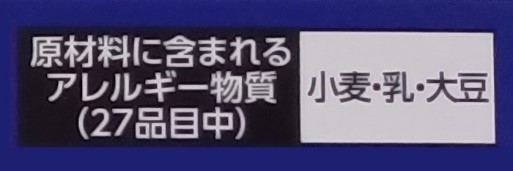

You can see that the original text is overwritten with translated text. And this translation is performed automatically through your phone’s camera! Very convenient!
Please be advised that sometimes the translation can change depending on the angle you’re holding your phone. Keep your phone steady and parallel to the product surface for the best result.
Final Message
Hopefully, all of the advice and terminology provided in this article should give you a big boost in interpreting food labels in Japan. Happy (and healthy) eating!
Photo Credits:
Top Photo by Markus Winkler on Unsplash
Additional photos provided by the original author (self-taken & edited)
All other content (text) created by the original author and © 2021 MUSUBI by Borderlink
Top Image: Borderlink Staff Member, used with permission
Japan is a country that is steeped in a rich history going back thousands of years. Even though it is a small country, there is so much to see. But because of its size, I think this gives an advantage to travelers.
Travelling in Japan is extremely accessible with so many different options to get to where you want to go. You can take the train, bullet train, bus, car, or plane, and reach just about anywhere in the country. Whether you are living in Japan working here, or coming to visit in the future, I believe these 3 places in particular are worth visiting to experience pieces of Japan’s long history.
Himeji
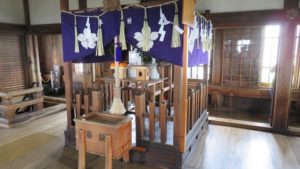 So, imagine yourself riding on a train. You pull into the station and walk out, only to look up. There, in the distance straight ahead of you is a beautiful white castle on the horizon. This is the view I saw walking out of Himeji Station.
So, imagine yourself riding on a train. You pull into the station and walk out, only to look up. There, in the distance straight ahead of you is a beautiful white castle on the horizon. This is the view I saw walking out of Himeji Station.
Himeji is a quiet city about a two-hour train ride from Osaka. It is home to one of Japan’s oldest surviving castles, and easily the largest. Himeji Castle has been standing for about 400 years now. It is considered the finest example of Japan’s prototypical castle structures. Unlike places like Osaka Castle, Himeji still retains its original wooden interior. You can walk through all the castle floors to the top. On the top floor you can admire the beautiful view of the city below. It’s a trip well worth making!
Nikko
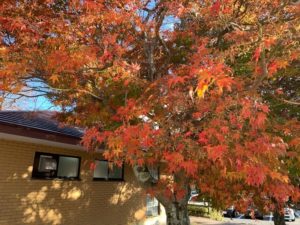 One of the most prominent turning points of Japan’s history was of course the Edo Period. And the person that symbolizes that turn is none other then Tokugawa Ieyasu.
One of the most prominent turning points of Japan’s history was of course the Edo Period. And the person that symbolizes that turn is none other then Tokugawa Ieyasu.
What most travelers to Japan don’t know is that you can actually visit his grave site. His body is housed in a Shrine in Nikko. Nikko is about two hours north of Tokyo. It is a very beautiful place, especially if you go during the fall season when the leaves change color. During that time, a lot of people love to go up the Iroha-zaka winding road to see the beautiful colors of the mountain side. There are so many other things to see there too, like Nikko Toshogu Shrine (the aforementioned one that houses Tokugawa’s remains), Kegon Falls and tons of hot springs.
Nara
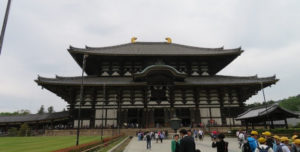 Finally, the last place I would like to talk about is Nara. Maybe a lot of people know Nara for the deer that walk freely down the streets and around the park near the station. But Nara is also the home to the world’s oldest wooden building, Horyuji. You can also see the world’s largest bronze Buddha statue here.
Finally, the last place I would like to talk about is Nara. Maybe a lot of people know Nara for the deer that walk freely down the streets and around the park near the station. But Nara is also the home to the world’s oldest wooden building, Horyuji. You can also see the world’s largest bronze Buddha statue here.
Of course, big cities like Tokyo and Osaka are exciting places with much to do. But I don’t think your Japan experience should stop with those when there is so much more the country has to offer. These are just some of the places I think everyone should check out, but the list goes on! These three in particular are among the most beautiful, and I hope that many more people will visit and appreciate the things they have to offer.
All photos (including cover image) provided by the MUSUBI Staff.
Photo Credits:
Top Image: Borderlink Staff Member, used with permission
Additional photos provided by the original author (self-taken)
All other content (text) created by the original author and © 2021 MUSUBI by Borderlink
Top Photo by Na visky on Unsplash
Tea has been an important part of the culture and everyday life in Japan for centuries. We know for a fact that it is one of the reasons why Japan is considered one of the countries with the highest life expectancy in the world. And we here at MUSUBI love tea!
Since it is the most popular beverage in Japan, various types of teas are widely available and consumed by many. So, let’s get into the fun of learning some types of Japan’s native green tea, and their health benefits. Then, you too can choose the tea that best that suits your taste!
The Types of (Green) Tea
Ryokucha (Green Tea)
From the emerald-green color created when brewing unfermented tea leaves, green tea has been proven to be beneficial to our body. There are different grades of tea that are cultivated depending on the timing of the harvest and the amount of sunlight they received:
Gyokuro is the top-grade tea which contains a lot of caffeine and chlorophyll that stimulates tissue growth, resulting in healthy skin. It has a lower astringency and richer flavor.
Sencha is the most common type of Japanese green tea with delicate sweetness and mild astringency. It highly contains of vitamin C and is especially popular among women as a teatime drink.
Bancha tea leaves on the other hand is more astringent and has less fragrant than Sencha, making it just the right tea to sip after a heavy meal.
Matcha (Powdered Green Tea)
Another type of green tea that is grinded into thin powder and then whisked with hot water is the matcha or powdered green tea. It is commonly used in tea ceremonies, a well-known Japanese cultural activity. Matcha contains a class of antioxidants called catechins , which are believed to fight against cancer and diabetes. It is also used for making Japanese confections.
Konacha (Residual Green Tea)
The green tea that is usually served in a sushi restaurant is the Konacha . It consists of the tea buds, tea dust and small tea leaves that remained after processing gyokuro or sencha. It is also often used in making tea bags.
Hojicha (Roasted Green Tea)
By roasting the tea, the leaves turn a reddish-brown color, and the caffeine is sublimated which makes for a less bitter, sweet, and slightly caramel-like aroma. Hojicha also provides a relaxing effect due to an amino acid called L-Theanine. For this reason, it becomes a suitable drink for children, the elderly, and those recovering from illness. It can also be served cold in hot summer.
Genmaicha (Green Tea with Roasted Brown Rice)
Genmai or brown rice is blended with the roasted leaves which produces a distinct and fragrant aroma. The nutty taste and mild flavor make it the ideal tea to drink after an oily meal or deep-fried foods, such as tempura. It is also known to help improve oral health thanks to the polyphenols contained in its leaves.
The Health Benefits
Numerous studies have shown that a variety of teas may boost your immune system, fight off inflammation, and even ward off cancer and heart disease. While some brews provide more health advantages than others, there’s plenty of evidence that regularly drinking tea can have a lasting impact on your wellness.
Wanting to stay healthy is what we all want to achieve while enjoying life. A healthy lifestyle can help you thrive throughout your life. Making healthy choices isn’t always easy, which is why it’s us to find the time and energy to make effort in keeping our health in check.
Perhaps one of the solutions is to just simply drink a bottle of tea. William Ewart Gladstone once said, “If you are cold, tea will warm you; if you are too heated, it will cool you; if you are depressed, it will cheer you; if you are excited, it will calm you”. We’re inclined to agree!
Photo Credits & Information:
Top Photo by Na visky on Unsplash
Additional Information Source
All other content (text) created by the original author and © 2021 MUSUBI by Borderlink
